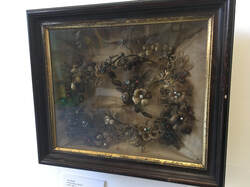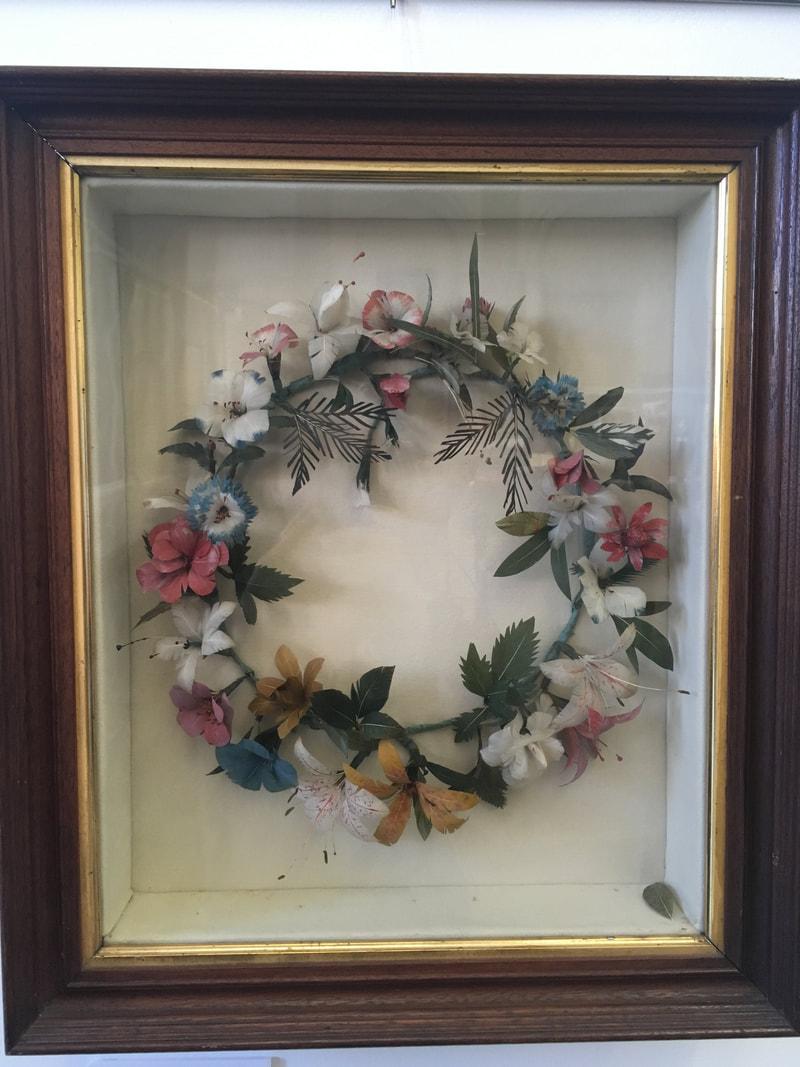"See the wreath in that frame over there? That's Hair Art"
"Whaaat?" |

| An interesting side note is that hair wreaths were not exclusively made for mourning however. Some wreaths were made to commemorate happy times, such as weddings and the growth of families or social groups like churches. One of the watch fobs on display here was made by a sister for a brother who was traveling to America from Norway. |


 RSS Feed
RSS Feed